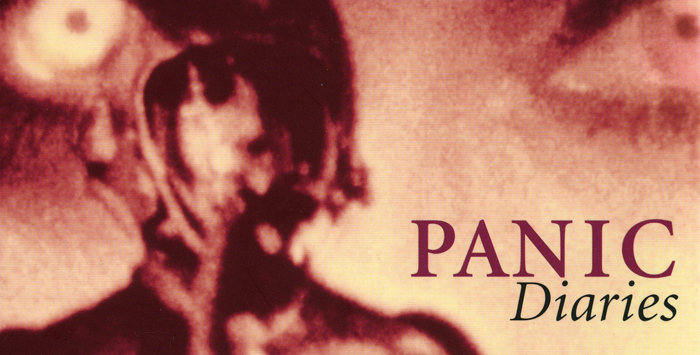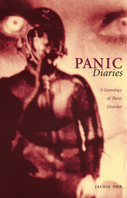Panic Diaries: A Genealogy of Panic Disorder
Durham, NC: Duke University Press, 2006
Part cultural history, part sociological critique, and part literary performance, Panic Diaries explores the technological and social construction of individual and collective panic. Jackie Orr looks at instances of panic and its “cures” in the twentieth-century United States: from the mass hysteria following the 1938 radio broadcast of H. G. Wells's War of the Worlds to an individual woman swallowing a pill to control the “panic disorder” officially recognized by the American Psychiatric Association in 1980. Against a backdrop of Cold War anxieties over atomic attack, Orr highlights the entanglements of knowledge and power in efforts to reconceive panic and its prevention as problems in communication and information feedback. Throughout, she reveals the shifting techniques of power and social engineering underlying the ways that scientific and social scientific discourses—including crowd psychology, Cold War cybernetics, and contemporary psychiatry—have rendered panic an object of technoscientific management.
Orr, who has experienced panic attacks herself, kept a diary of her participation as a research subject in clinical trials for the Upjohn Company's anti-anxiety drug Xanax. This “panic diary” grounds her study and suggests the complexity of her desire to track the diffusion and regulation of panic in U.S. society. Orr's historical research, theoretical reflections, and biographical narrative combine in this remarkable and compelling genealogy, which documents the manipulation of panic by the media, the social sciences and psychiatry, the U.S. military and government, and transnational drug companies.
“Jackie Orr is one of sociology's most inventive theorists. Here in Panic Diaries she is brilliantly interdisciplinary, joining social theory with rigorous historical research, feminist criticism, and science studies to give us a genealogy of panic from its invention in nineteenth-century social science to its late-twentieth-century medicalization as panic disorder. And more, all of this is cut through with autobiographic experimental writing that makes your heart beat faster—a first-hand experience of panic. A book to read, a book to teach.”
—Patricia Ticineto Clough, author of Autoaffection: Unconscious Thought in the Age of Technology
“Packed with original interpretations of historical material, textually innovative, and theoretically brilliant, this book is full of mind-blowing insights for anyone interested in the science and culture of panic.”
—Emily Martin, author of The Woman in the Body:
A Cultural Analysis of Reproduction
“Biopsychiatry and the Informatics of Diagnosis”
Biomedicalization: Technoscience, Health and Illness in the U.S.
Pp. 353-379 in Adele E. Clarke, Laura Mamo, Jennifer Fosket, Jennifer Fishman, and Janet K. Shim, editors. Durham, NC: Duke University Press, 2010.
“The ‘Soul of the Citizen,’ the Invention of the Social: Governing Mentalities.”
Cultural Handbook of Sociology
Pp. 547-556 in John R. Hall, Laura Grindstaff, and Ming-Cheng Yo, editors. London: Routledge, 2010.
“The Militarization of Inner Space.”
Critical Sociology Vol. 30, No. 2 (Spring 2004): 451-482.
[Reprinted in Biofears and Environmental Anxieties : Making Threats.
Pp.
47-70 in Betsy Hartmann, Banu Subramaniam, and Charles Zerner, editors.
Lanham, MD: Rowman & Littlefield, 2005.]
“The Ecstasy of Miscommunication: Cyberpsychiatry and Mental Dis-ease.”
Doing Science + Culture
Pp. 151-176 in Roddey Reid and Sharon Traweek, editors. New York: Routledge, 2000.
“Science Fiction Feminism? Situating Donna Haraway.”
Introduction to Donna Haraway, Ciencia, Cyborgs y Mujeres: La Reinvención de la Naturaleza
(Spanish translation of Simians, Cyborgs, and Women: The Reinvention of Nature)
Pp. 32-51 in Manuel Talens, translator. Madrid, Spain: Universitat de València, Institute de la Mujer, 1995.
“Theory on the Market: Panic, Incorporating.”
Social Problems Vol. 37, No. 4 (November 1990): 460-484. |

